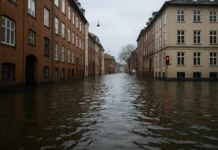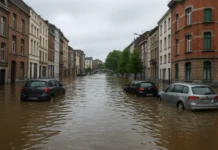
Ireland is one of Europe’s fastest-growing economies, but beneath its strong GDP and high living standards lies a set of structural challenges that affect households, businesses, and long-term growth. From housing shortages to regional inequality, these issues continue to shape the country’s development.
Below is a clear, balanced, and ad-safe breakdown of the 10 major problems Ireland faces today.
The 10 Biggest Problems in Ireland
| Rank | Major Problem | Short Explanation |
|---|---|---|
| 1 | Housing Shortage | Insufficient supply, rising rents, and slow construction impact affordability. |
| 2 | Cost of Living | Prices for housing, childcare, and services strain middle- and low-income families. |
| 3 | Healthcare System Pressures | Long waiting lists, staffing shortages, and regional disparities persist. |
| 4 | Infrastructure Gaps | Transport links outside Dublin remain limited, impacting accessibility and growth. |
| 5 | Regional Inequality | Urban areas are booming, while rural communities face shrinking populations and limited services. |
| 6 | Aging Population | Ireland’s demographic shift increases pension and healthcare demands. |
| 7 | Climate & Environmental Risks | Extreme weather, flooding, and sustainability commitments require primary investment. |
| 8 | Dependence on Multinational Corporations (MNCs) | Tax revenues rely heavily on global companies, creating economic vulnerability. |
| 9 | Migration & Integration Challenges | New arrivals bring both opportunities and increased pressure on public services. |
| 10 | Skills Shortages | The need for workers in healthcare, construction, and technology exceeds the available supply. |
Housing Shortage
Ireland’s housing crisis remains the country’s most significant challenge. Demand far exceeds supply, resulting in high rents, limited availability, and growing barriers to homeownership. Young professionals, families, and low-income households are most affected.Rising Cost of Living
Inflation, service charges, and elevated housing costs place financial pressure on residents. Essentials—from groceries to childcare—remain expensive relative to average wages.Healthcare System Pressures
The healthcare system continues to struggle with long waiting lists and staff shortages. Although reforms aim to increase capacity, progress remains slow, and access varies significantly across regions.Infrastructure Gaps
Dublin benefits from robust infrastructure, while many rural and western regions continue to fall behind. Limited public transport, slow rail expansion, and uneven broadband coverage restrict economic growth outside major cities.Regional Inequality
Economic activity is concentrated around Dublin, Cork, and Galway, while smaller towns face shrinking populations, limited job opportunities, and declining public services.Aging Population
Ireland’s demographic shift is leading to a growing number of retirees, higher pension obligations, and mounting pressure on healthcare and social support systems.Climate & Environmental Risks
Flooding, coastal erosion, and extreme weather increasingly disrupt communities—particularly rural and coastal areas. Meeting EU climate targets will require primary infrastructure investments.Dependence on MNCs
A large share of Ireland’s tax revenue comes from multinational technology and pharmaceutical companies. It boosts GDP but also exposes the economy to global market shifts.Migration & Integration Challenges
Ireland welcomes migrants who strengthen the workforce, but rapid population growth is putting pressure on housing, healthcare, and education services.Skills Shortages
Key sectors, including construction, healthcare, and engineering, are experiencing shortages of qualified workers. It slows housing construction, increases medical waiting times, and limits innovation.
Frequently Asked Questions (FAQs)
Is Ireland still one of the fastest-growing economies in Europe?
Yes. Ireland maintains strong economic growth, driven by tech, pharmaceuticals, and services—but these strengths coexist with structural challenges.
Why is housing such a leading issue?
Construction levels have not kept pace with population growth, resulting in rising rents, limited supply, and demand that the market can no longer sustain.
Are rural areas in Ireland declining?
Many regions outside major cities face slower growth, limited transport options, and fewer economic opportunities, contributing to depopulation.
What is Ireland doing to address healthcare problems?
Government initiatives aim to reduce waiting lists, expand infrastructure, and attract more healthcare workers, though improvements take time.
Where can I find reliable data about Ireland’s economy?
You can access authoritative statistics through the OECD: www.oecd.org/ireland














